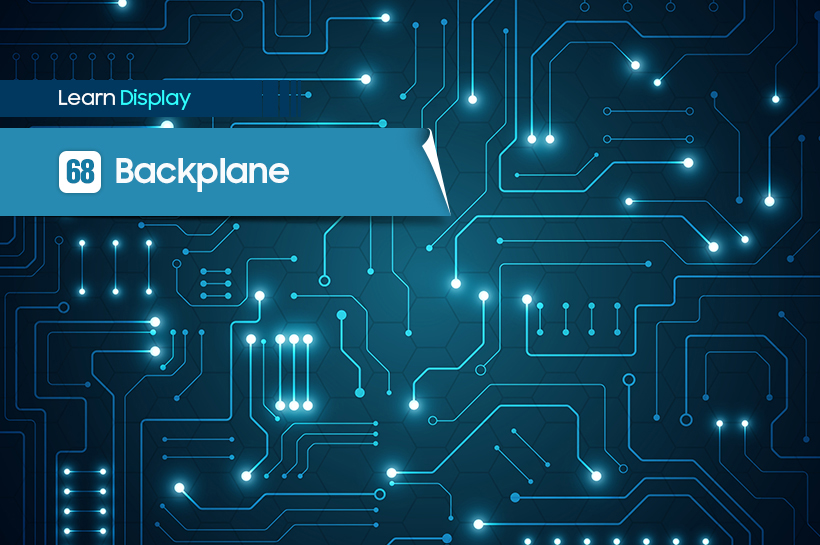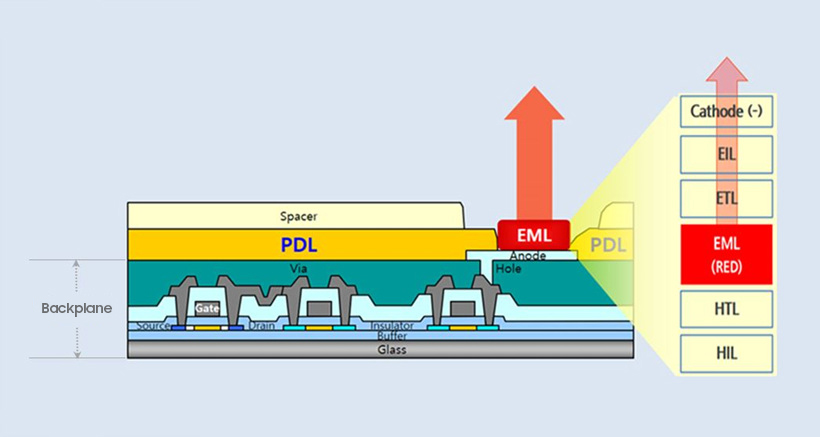
In the back of the display, that’s where you’ll find circuits operating the screen. Backplane refers to the “back” of the display plane.
Simply put, OLED display consists of three parts: The emission material layer (EML) that emits the light that we see; the thin-film transistor (TFT) that turns on and off the electrical switch to ensure the EML can emit light when needed; and the substrate that serves as the foundation on which the TFT and the EML are stacked.

A backplane is the combination of the substrate and the thin film transistor (TFT) on top. In other words, the backplane is a state before the deposition of organic materials, which emit light under electrical signals.
The backplane plays a critical role in determining the key functions of a display. Its structure and materials variation affect factors such as display resolution (central to the image quality of a display) and power consumption affecting the duration of use of a mobile device. Form factor of a display product can also be affected as flexible and stretchable displays are manufactured when using flexible materials on substrates/encapsulation.



